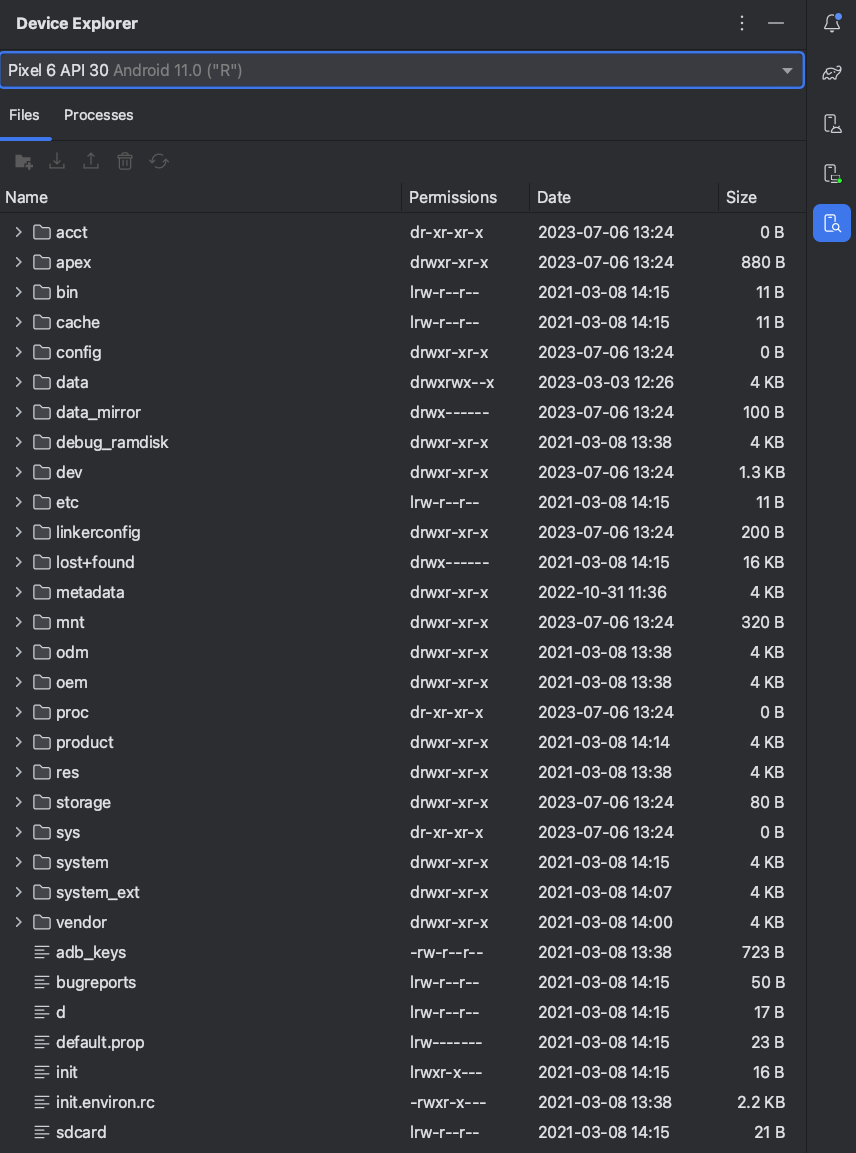סייר המכשירים מאפשר לכם להציג, להעתיק ולמחוק קבצים במכשיר Android. האפשרות הזו שימושית כשבודקים קבצים שהאפליקציה יוצרת או כשרוצים להעביר קבצים אל מכשיר וממנו.
כדי לעבוד עם מערכת הקבצים של מכשיר, מבצעים את הפעולות הבאות:
- כדי לפתוח את Device Explorer, בוחרים באפשרות View > Tool Windows > Device Explorer (תצוגה > חלונות כלים > Device Explorer) או לוחצים על הלחצן Device Explorer (Device Explorer)
 בסרגל חלונות הכלים.
בסרגל חלונות הכלים. - בוחרים מכשיר מהרשימה הנפתחת.
- איך משתמשים בתוכן של המכשיר בחלון של סייר הקבצים:
- לוחצים לחיצה ימנית על קובץ או על ספרייה כדי ליצור קובץ או ספרייה חדשים.
- שמירה, העלאה, מחיקה או סנכרון של הקובץ או הספרייה שנבחרו במחשב.
- לוחצים לחיצה כפולה על קובץ כדי לפתוח אותו ב-Android Studio.

איור 1. חלון הכלי Device Explorer.
Android Studio שומר קבצים שפותחים בסייר המכשירים בספרייה זמנית מחוץ לפרויקט. אם מבצעים שינויים בקובץ שנפתח באמצעות הכלי לבדיקת מכשירים ורוצים לשמור את השינויים בחזרה במכשיר, צריך להעלות ידנית את הגרסה ששונתה של הקובץ למכשיר.
כשבודקים את הקבצים של מכשיר, כדאי לשים לב במיוחד לספריות הבאות:
data/data/app_name/- מכיל קובצי נתונים של האפליקציה ששמורים באחסון הפנימי.
sdcard/- כולל קובצי משתמשים שמאוחסנים באחסון של משתמשים חיצוניים (תמונות וכו').
הערה: לא כל הקבצים במכשיר חומרה מוצגים בסייר המכשירים. לדוגמה, בספרייה data/data/, אי אפשר להרחיב את הרשומות שמתאימות לאפליקציות במכשיר שלא ניתן לבצע בהן ניפוי באגים.

